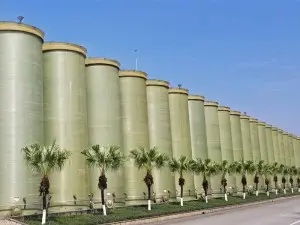
-
 Afrikaans
Afrikaans -
 Albanian
Albanian -
 Amharic
Amharic -
 Arabic
Arabic -
 Armenian
Armenian -
 Azerbaijani
Azerbaijani -
 Basque
Basque -
 Belarusian
Belarusian -
 Bengali
Bengali -
 Bosnian
Bosnian -
 Bulgarian
Bulgarian -
 Catalan
Catalan -
 Cebuano
Cebuano -
 China
China -
 China (Taiwan)
China (Taiwan) -
 Corsican
Corsican -
 Croatian
Croatian -
 Czech
Czech -
 Danish
Danish -
 Dutch
Dutch -
 English
English -
 Esperanto
Esperanto -
 Estonian
Estonian -
 Finnish
Finnish -
 French
French -
 Frisian
Frisian -
 Galician
Galician -
 Georgian
Georgian -
 German
German -
 Greek
Greek -
 Gujarati
Gujarati -
 Haitian Creole
Haitian Creole -
 hausa
hausa -
 hawaiian
hawaiian -
 Hebrew
Hebrew -
 Hindi
Hindi -
 Miao
Miao -
 Hungarian
Hungarian -
 Icelandic
Icelandic -
 igbo
igbo -
 Indonesian
Indonesian -
 irish
irish -
 Italian
Italian -
 Japanese
Japanese -
 Javanese
Javanese -
 Kannada
Kannada -
 kazakh
kazakh -
 Khmer
Khmer -
 Rwandese
Rwandese -
 Korean
Korean -
 Kurdish
Kurdish -
 Kyrgyz
Kyrgyz -
 Lao
Lao -
 Latin
Latin -
 Latvian
Latvian -
 Lithuanian
Lithuanian -
 Luxembourgish
Luxembourgish -
 Macedonian
Macedonian -
 Malgashi
Malgashi -
 Malay
Malay -
 Malayalam
Malayalam -
 Maltese
Maltese -
 Maori
Maori -
 Marathi
Marathi -
 Mongolian
Mongolian -
 Myanmar
Myanmar -
 Nepali
Nepali -
 Norwegian
Norwegian -
 Norwegian
Norwegian -
 Occitan
Occitan -
 Pashto
Pashto -
 Persian
Persian -
 Polish
Polish -
 Portuguese
Portuguese -
 Punjabi
Punjabi -
 Romanian
Romanian -
 Russian
Russian -
 Samoan
Samoan -
 Scottish Gaelic
Scottish Gaelic -
 Serbian
Serbian -
 Sesotho
Sesotho -
 Shona
Shona -
 Sindhi
Sindhi -
 Sinhala
Sinhala -
 Slovak
Slovak -
 Slovenian
Slovenian -
 Somali
Somali -
 Spanish
Spanish -
 Sundanese
Sundanese -
 Swahili
Swahili -
 Swedish
Swedish -
 Tagalog
Tagalog -
 Tajik
Tajik -
 Tamil
Tamil -
 Tatar
Tatar -
 Telugu
Telugu -
 Thai
Thai -
 Turkish
Turkish -
 Turkmen
Turkmen -
 Ukrainian
Ukrainian -
 Urdu
Urdu -
 Uighur
Uighur -
 Uzbek
Uzbek -
 Vietnamese
Vietnamese -
 Welsh
Welsh -
 Bantu
Bantu -
 Yiddish
Yiddish -
 Yoruba
Yoruba -
 Zulu
Zulu
FRP Dual Layer Composite Solutions for Enhanced Performance and Durability
Understanding FRP Dual Layer Composite Products
Fiber Reinforced Polymer (FRP) dual layer composite products have emerged as a revolutionary technology in various industries, offering unique advantages in terms of strength, durability, and versatility. Comprising two distinct layers, these composites combine the superior properties of both the fiber reinforcement and the polymer matrix, resulting in materials that outperform traditional substances in many applications.
Understanding FRP Dual Layer Composite Products
One of the prominent benefits of FRP dual layer composites is their exceptional resistance to corrosion and chemical damage. Unlike traditional metals, which may succumb to rusting and deterioration over time, FRP composites maintain their integrity even in harsh environmental conditions. This property makes them incredibly valuable in industries such as construction, marine, and oil and gas, where exposure to corrosive elements is commonplace.
frp dual layer composite product

Moreover, the versatility of FRP materials allows for customization according to specific industrial needs. Manufacturers can adjust the fiber type, orientation, and the polymer’s characteristics to create composites that meet precise engineering requirements. This adaptability enables the production of tailored solutions for diverse applications, from structural components in buildings to lightweight panels in automotive design.
The sustainability aspect of FRP dual layer composites is also noteworthy. Many of these materials are designed with recyclable components that reduce waste and promote environmental responsibility. As industries increasingly focus on sustainable practices, the demand for eco-friendly materials is on the rise. FRP composites, with their long service life and lower maintenance requirements, present a sustainable alternative to conventional materials.
Furthermore, the growing trend towards automation and smart manufacturing highlights the potential of FRP dual layer composites. With advancements in manufacturing techniques such as 3D printing and automated fiber placement, these composites can be produced with greater efficiency and precision, leading to reduced costs and improved product performance.
In conclusion, FRP dual layer composite products represent a significant advancement in material science, offering capabilities that are increasingly necessary in today’s fast-paced and environmentally conscious world. As industries continue to explore the potential of these versatile materials, we can expect to see them play a pivotal role in shaping the future of manufacturing, construction, transportation, and beyond. With their unique properties and sustainable characteristics, FRP composites are not merely an alternative; they are an essential component driving innovation and progress across various sectors.









